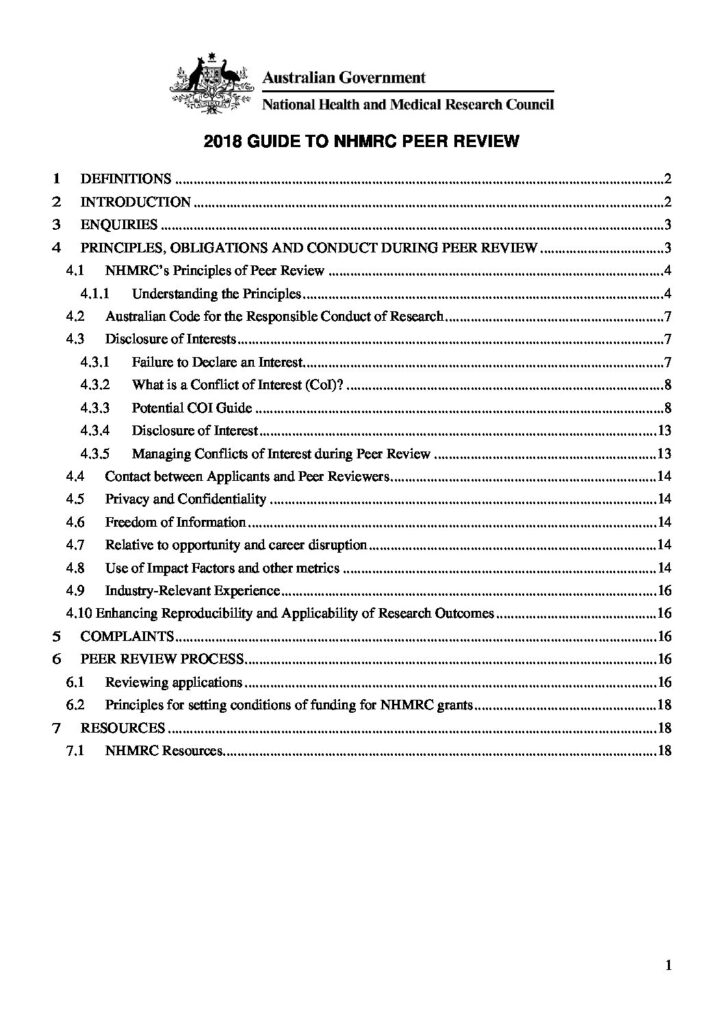The 2018 NHMRC guide for peer review (now unavailable from NHMRC; archived version at University of Melbourne) instructed assessors not to rely on the Journal Impact Factor when making judgements. The guidance also provides details about how the Council is adhering to the spirit of DORA, including:
- Eliminated the use of Journal Impact Factors and the Excellence in Research for Australia (ERA) Ranked Journal List in the assessment of research achievement of applicants
- Publishing assessment criteria and providing detailed descriptors in relation to each criterion for each of its funding schemes.
- Requiring consideration of a broad range of measures that affect the assessment of an applicant’s research achievement. These include both quantitative and qualitative measures, such as the scientific value of publications and influence on current dogma, policy, or practice.
Starting in 2022, researchers applying for funding at the NHRMC will be required to list their top ten publications from the past decade, and peer reviewers will no longer receive the full list of applicant publications. The reviewers will instead focus on assessing the quality and contribution of science within ten publications rather than assessing quantity. This shift aligns with the academic community’s move towards valuing research quality over quantity, and aims to ensure fairness across career stages and fields, reduce reviewer burden, and align with international funding agencies. Another important change to the funding application is how it provides opportunity for those who have had career disruptions, noting how “publications can be nominated from the last ten years plus any additional time accounting for the career disruption.” The main goals of this policy were laid out by the NHMRC:
- “support NHMRC’s policy of emphasizing the quality of publications, not the quantity, and drive sectoral change to value research quality rather than quantity of publications
- help make assessment of publications equitable for applicants across all career stages and research fields
- significantly reduce peer reviewer burden
- align with publication assessment practices of many international funding agencies.”
This policy initially applies to the Investigator Grant scheme and allows for citing additional publications in the Research Impact section.
The National Health and Medical Research Council (2018). 2018 GUIDE TO NHMRC PEER REVIEW.
https://research.unimelb.edu.au/__data/assets/pdf_file/0008/2634722/2018-Guide-to-NHMRC-Peer-Review.pdf


